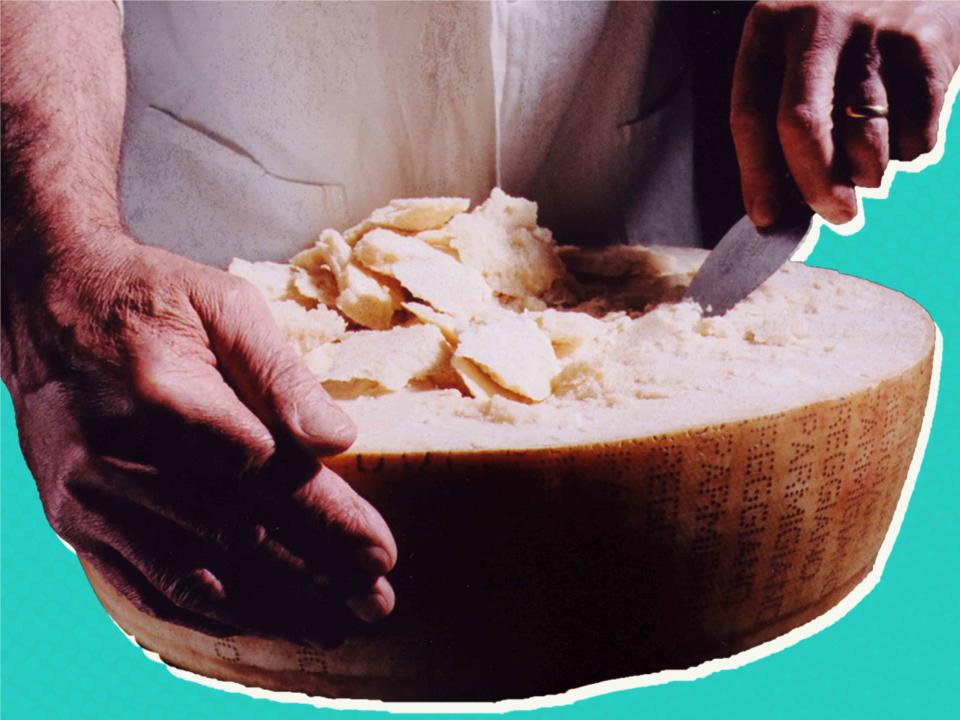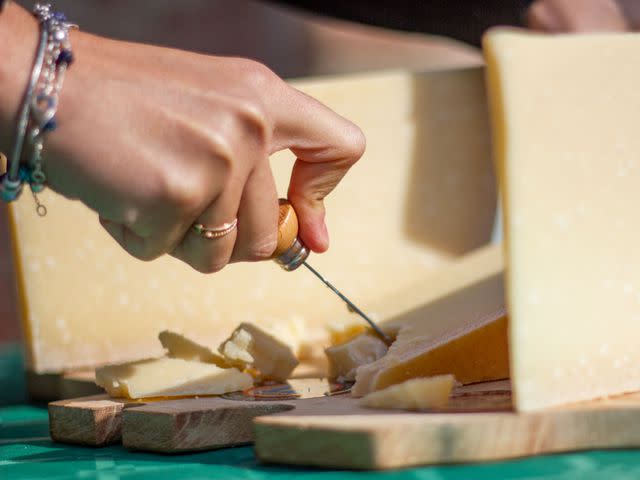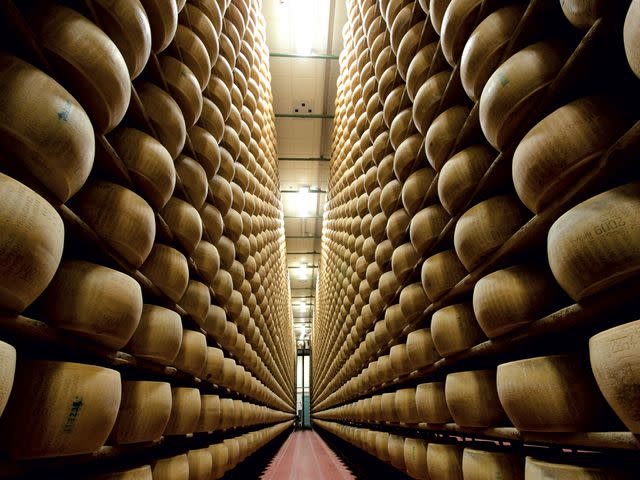6 Ways to Use Parmigiano Reggiano Like a True Italian
Chocolate and cheese? I'll try anything once.

Parmigiano Reggiano Consortium/Allrecipes
Last fall on a trip to Parma, Italy hosted by the Parmigiano Reggiano Consortium, I got to experience a whole different side of this well-known cheese. And no, Parmigiano Reggiano isn’t just any old parmesan—this particular cheese is protected and has to be certified to bear the Parmigiano Reggiano name. Not only did we get to see how each wheel is created from milk all the way to cheese wedge (including a visit to the “cheese cathedral” where shelves easily 5 times my height are lined with wheels of aging Parm), we got to try it in so many different applications. Many of them unlike anything I’ve had stateside, but since I’ve been back I’ve loved sharing them with anyone who will listen, and now all of you. So if you want to show off your own brand of true Italian, here are the best ways to use that Parm:
1. Break It Into Chunks
Do not, I repeat, do not cut Parmigiano Reggiano—true Italians only ever break this cheese into chunks by driving a knife into the wedge and then pulling the knife like a lever to release a hunk of Parm. According to our tour guide and the official interpreter of the Parmigiano Reggiano Consortium Ilaria Bertinelli, this allows you to “appreciate the grainy texture of the cheese, which contributes to the way you feel it in the mouth.” Otherwise, you cut right through all those nice crystalized bits that are a signature of Parmigiano Reggiano.

Devon O'Brien/Allrecipes
2. Serve the Oldest Versions for Dessert
All Parmigiano Reggiano has to age for at least one year, during which time the natural bacteria in the milk transforms the composition and therefore flavor of the cheese. So the longer it ages the more robust and complex the flavor becomes. Some Parmigiano Reggiano cheese is aged for 36 months or longer and true Italians serve their oldest ones for dessert alongside dessert wine, fresh fruit like figs, and grapes and nuts like walnuts. The sweet pairings balance the flavor of the salty, tangy cheese in perfect cheese board harmony.
3. Use Multiple Ages of Cheese in One Dish
The aging process doesn’t just alter the flavor of the cheese, but also the texture. The longer the cheese rests in that “cheese cathedral,” the more moisture it loses, resulting in a more hard, crumbly cheese. Therefore in some dishes, most famously the Christmas Anolini (a stuffed pasta from the Parma region), two different ages of Parmigiano Reggiano are combined to make a filling that’s both full of flavor while still being creamy. Bertinelli recommends combining 24-month-aged Parm with 36-month-aged Parm for the best results.

Parmigiano Reggiano Consortium
4. Dunk Chunks of the Cheese in Chocolate
If you want to be an on-trend Italian, this is the one for you. Lately, people have been taking chunks of Parmigiano Reggiano and dipping them in melted chocolate to enjoy like a chocolate-covered strawberry. This is the newest way to get your sweet and salty fix.
5. Feed It To Your Infant
It might sound a little far-fetched, but in Italy, even babies enjoy a good Parmigiano Reggiano. Because of the aging process (yes, that again), this cheese ends up being free of common allergens. The naturally-occurring bacteria eat up the sugars (lactose) and break down the protein (casein) making this cheese easy to digest. So when Italian infants start making the transition to eating solid foods, parents will often mix some Parm into baby’s cereal. Mix it into your baby's cereal.
6. Take It to Space!
OK, fine, maybe this one is actually too far-fetched for you, but Parmigiano Reggiano is the only “fresh” solid food that’s carried on space missions. “Because of its characteristics, specifically digestibility and calcium content, Parmigiano is comparable to a food supplement for astronauts, and in particular, it is psychologically very helpful to them since it is very pleasant to eat unlike the tablets astronauts are forced to eat for months when on space missions,” Bertinelli explains. “Parmigiano can last long without special needs in terms of storage, it can be packaged in mini-portions that are easy to store and consume.”

